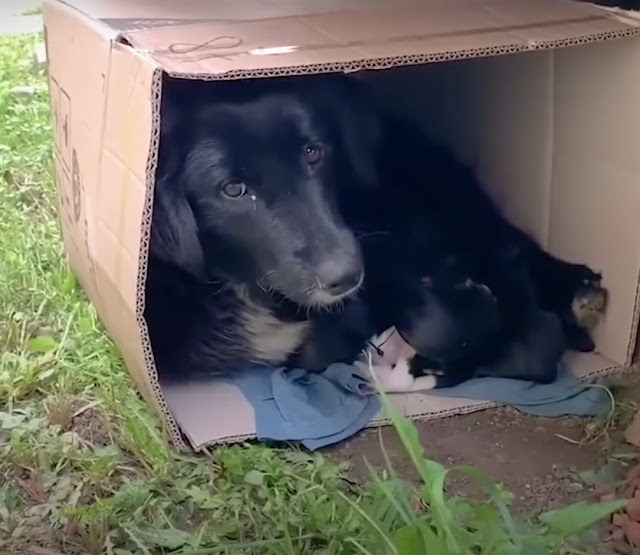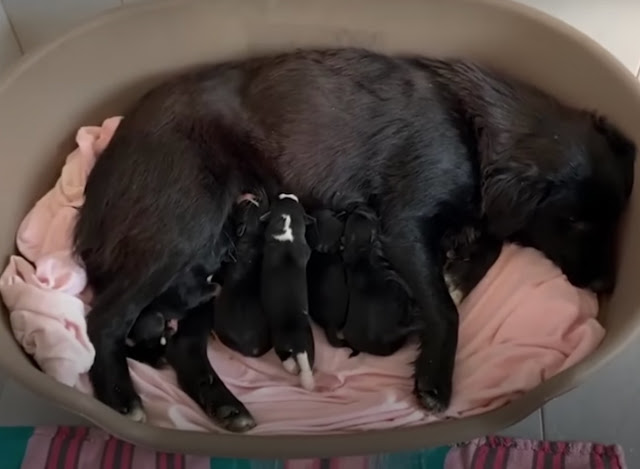
Life has a beautiful way of surprising us, and sometimes, those surprises come in the form of a furry, four-legged companion. Meet Johanna Carrington, a remarkable centenarian who, despite a life filled with challenges, has always carried a deep love for dogs.
Johanna’s journey began in war-torn Germany, where owning a dog was a distant dream. She and her late husband once shared their home with eight Pekingese dogs, a testament to their shared love for these loyal creatures. However, when her beloved dog Rocky passed away, Johanna was left feeling alone in her house, yearning for a furry friend.

One might think that, at the age of 100, adopting another dog could be a challenge. Johanna was uncertain if the shelter would allow someone of her age to adopt. Fortunately, a caring neighbor who supports Muttville Senior Dog Rescue in San Francisco suggested that this organization might have the perfect solution.
Muttville Senior Dog Rescue recognized that Johanna Carrington and a senior dog would be an ideal match. After careful consideration, Johanna adopted Gnocchi, a charming 11-year-old Chihuahua, whom she lovingly renamed Gucci.
Gucci’s life had a rocky start; he was rescued from a hoarding situation where his previous owner had 22 dogs. Being the only pampered pooch in his new home brought him immense joy. Johanna’s caregiver, Eddie Martinez, and her daughter, Debbie Carrington, made a heartfelt commitment to ensure that Gucci’s golden years would be filled with love and care.

The moment Gucci entered his new home, he seemed to recognize that he belonged there. Johanna recalled the heartwarming first encounter, saying, “He approached the home as though he’d been here before. It was incredible. When he spotted me seated in my chair, he leapt up and perched on my lap. He made himself extremely at ease. Right away, he was just our kid.”
Now, Gucci enjoys a life fit for a pampered pup. He has “oodles and oodles” of toys to play fetch with, daily back massages while watching TV with his new mom, and even the privilege of burrowing under the covers in bed for extra comfort.
Debbie Carrington, Johanna’s daughter, shared how Gucci’s arrival transformed their home, saying, “It was sort of sad here after she lost her other dog. It was silent and melancholy until Gucci came in and brought excitement into the house. Laughing at him running around and doing silly things, and then him resting on her lap with her when she’s in her chair or bed, it’s just making her very happy.”
The heartwarming bond between Johanna and Gucci is a testament to the joy and companionship that animals bring into our lives, regardless of age. In fact, scientific research supports the positive impact of pet ownership on emotional and social well-being, particularly in older individuals.

As Johanna approaches her 101st birthday in December, she and Gucci plan to celebrate this special milestone together. For Johanna, dogs have played a significant role in her long and healthy life, proving that the love between a human and their furry friend knows no age limits.
In a world that often seems fast-paced and hectic, the story of Johanna and Gucci reminds us of the simple yet profound happiness that animals can bring into our homes and hearts.
An example of maternal love and protection, a stray mother dog wraps up in a box with her puppies to provide warmth.
Mama dogs are very protective of their puppies. They will go to tremendous lengths to defend their puppies, even if it means sacrificing their own comfort, as long as their puppies are safe.

This is just what a stray mama dog did for her puppies.
She and her puppies resided in a box beneath a car. The temperature is chilly in the video, and she is cuddling with her pups to keep them as warm as possible.

Fortunately, a guy notices them and goes out to rescue them from their precarious living situation.
It’s not easy to approach a dog for the first time, but he took his time to demonstrate that he meant no harm. First, he provided food to the mother dog.

You can imagine how difficult it is for her to leave her pups to go food shopping.
She began eating and took food directly from his hand, indicating that she was beginning to trust him. He tried placing a leash on her after a time, but she refused to wear it and instead went out.
The puppies were then gently relocated from the box to a kennel by the man.

He did it carefully so their mother would know he wasn’t hurting the puppies.
Mama dog stood back and observed him until he successfully transported all of the puppies. When the man left, she returned to check on her infants and ensure their safety.
She laid down again under the car after she was confident that her puppies were safe. The man approached her with care.

He finally grabbed her up in his arms and carried her to a waiting van after caressing her for a time.
He carefully moved the puppies to a larger kennel and rejoined them with their mother. The puppies began to feed again, relieved to be reunited with their mother.

The most striking aspect of this video is the man’s concern for the dog.
You can tell he genuinely wants to assist the mama dog and her puppies.

The man is from Mladenovac Dog Rescue Shelter in Serbia. It is a non-profit, non-governmental rescue group that operates the area’s largest no-kill animal shelter.
He drove them to the shelter and saw to it that they were warm, fed, and comfortable.
The man even kisses the dogs and puppies to make them feel loved and appreciated.

“This man is the finest,” one netizen said. He is always polite and compassionate to the dogs he saves.”
“These extraordinary gestures of compassion give us all hope for mankind,” added another. “Excellent work!”
The mama dog and her puppies will remain in foster care at the shelter until they are ready to be adopted.
This happy mama dog will be able to live with a loving home rather than in a cardboard box, thanks to those who actually care about abandoned and neglected animals.

Mladenovac Dog Rescue Shelter conducts excellent work rescuing and caring abandoned animals. Please give on their website if you can.
Watch the video below to discover how this man rescued this mama dog and her puppies.



Leave a Reply